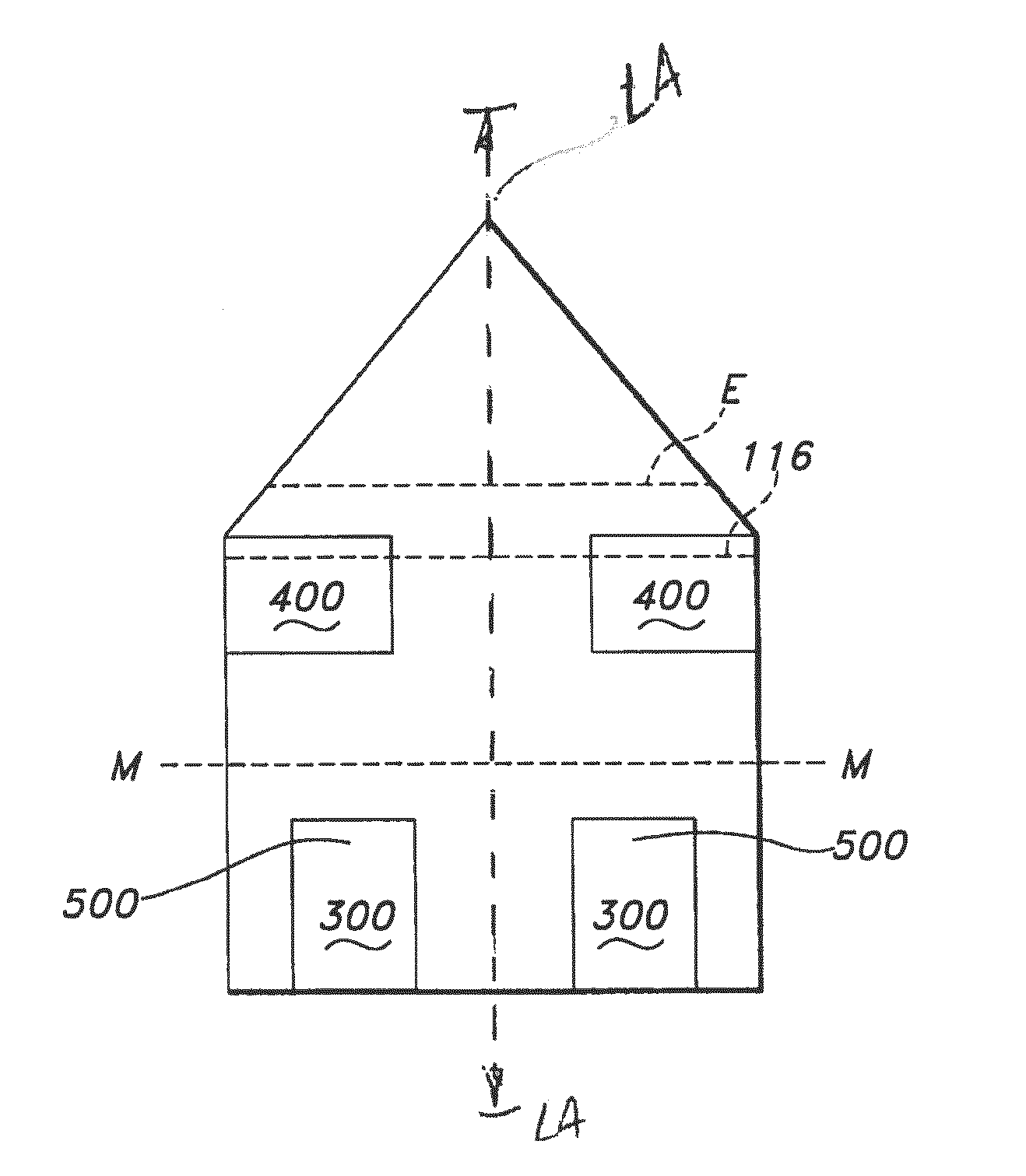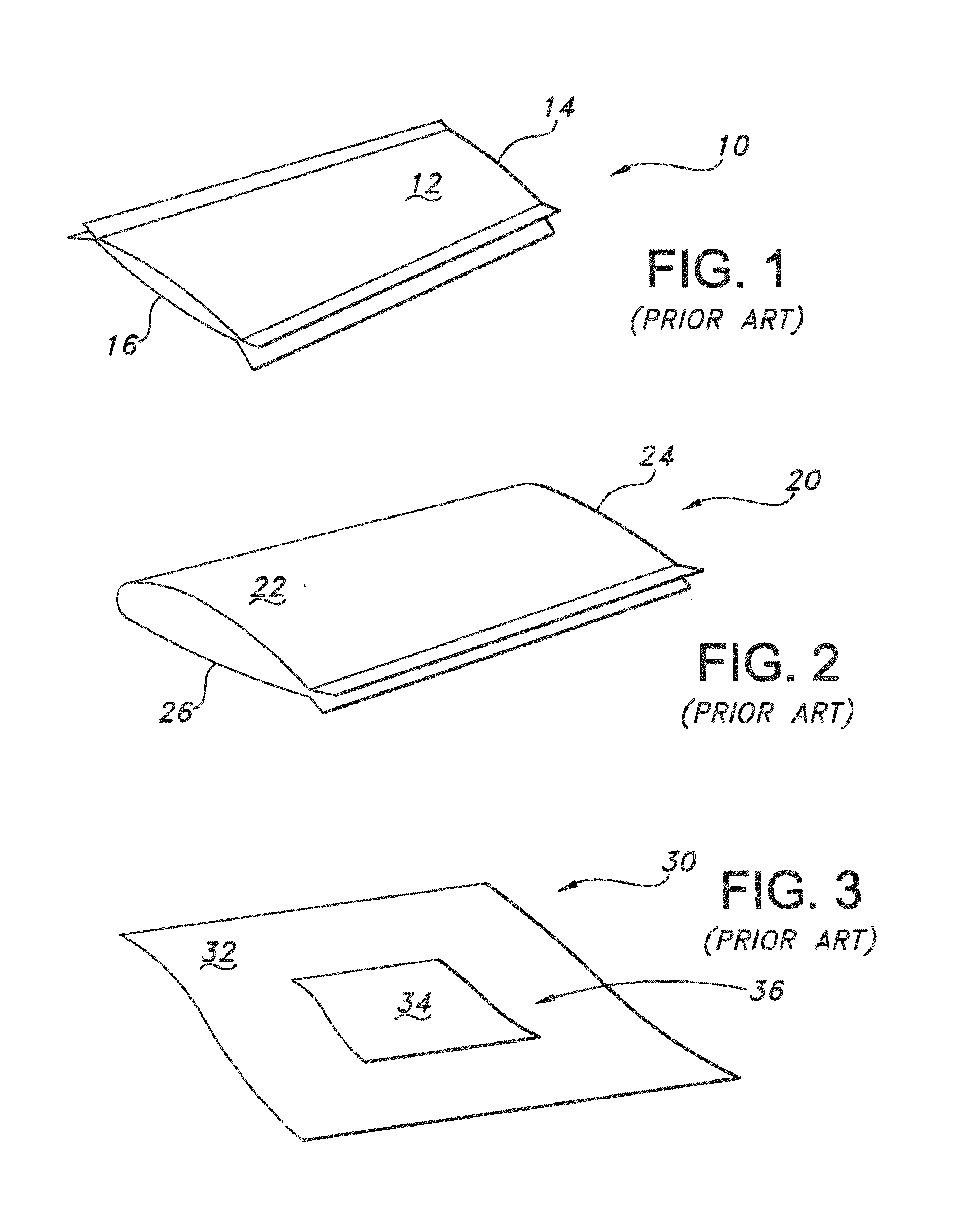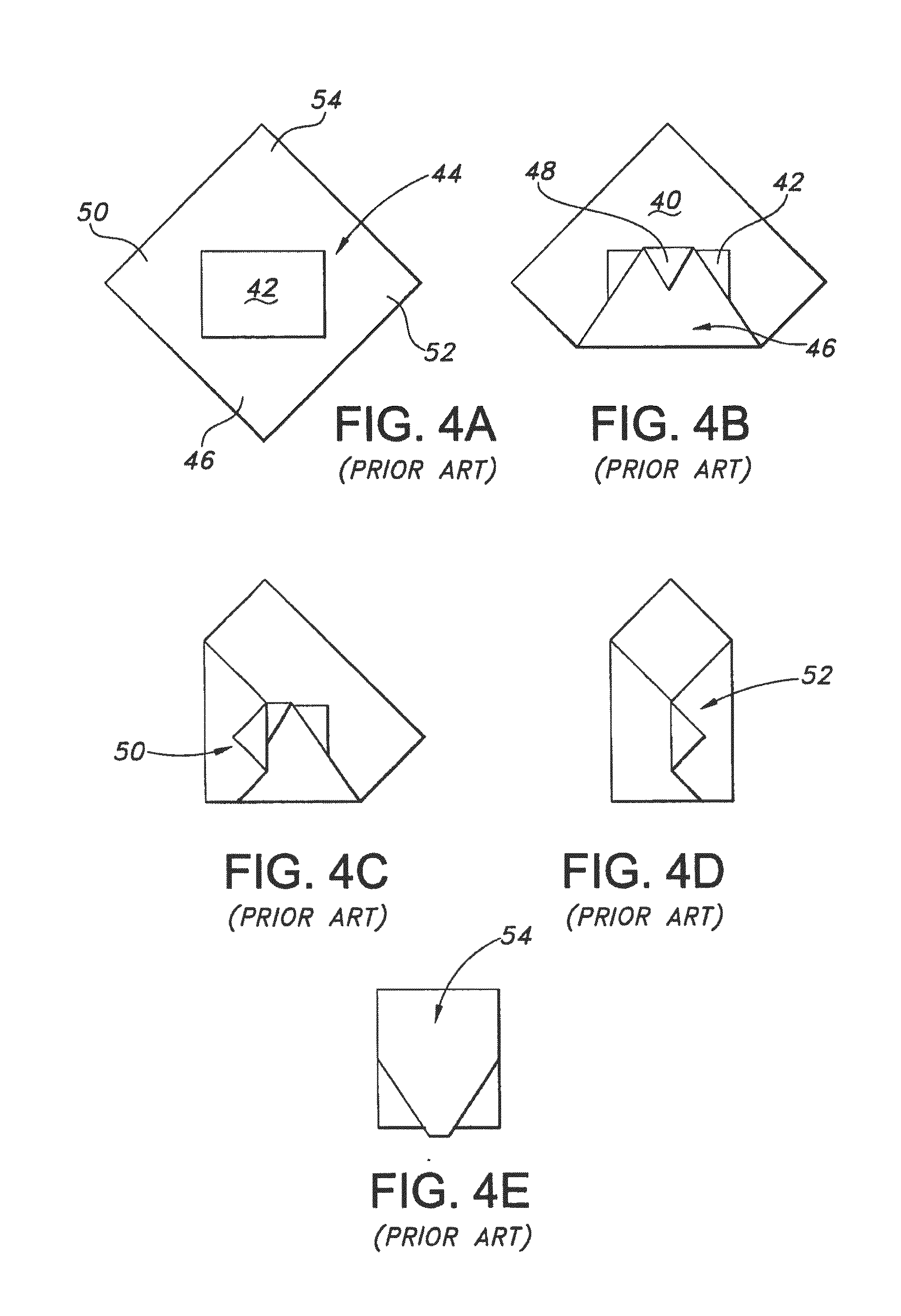Flexible Multi-Panel Sterilization Assembly With Mass Balancing Side Tabs
a multi-panel sterilization and side tab technology, applied in the field of disposable wraps, can solve the problems of compromising the sterility of the article, adding difficulty, and requiring immediate turnaround of medical equipment needed for some procedures, and achieve the effect of compensating cost and complexity
- Summary
- Abstract
- Description
- Claims
- Application Information
AI Technical Summary
Benefits of technology
Problems solved by technology
Method used
Image
Examples
examples
[0158]Aspects of the flexible multi-panel sterilization assembly with mass-balancing side tabs were evaluated in the following examples.
[0159]Exemplary flexible multi-panel sterilization assemblies were constructed to have eight (8) sides or edges. This geometry is generally as illustrated in FIGS. 8A-D; 9A-G and 10 A-D, except that the sterilization assemblies did not include pull tabs 300. That is, the sterilization assemblies were composed of a barrier panel 102, a fold protection panel 108, side tabs 400, reinforcement elements 302 and panel attachment means 106 located on the side tabs 400 as generally illustrated in these figures and as shown in FIGS. 15-19.
[0160]Each assembly of the invention has a bisecting longitudinal axis “LA” (sometimes referred to as a “bisecting axis of symmetry”) and a barrier panel 102 with a defined second end 118. The intersection of the longitudinal axis “LA” and the second end 118 of the barrier panel of an unfolded assembly is arbitrarily chosen...
PUM
| Property | Measurement | Unit |
|---|---|---|
| weight | aaaaa | aaaaa |
| weight | aaaaa | aaaaa |
| surface area | aaaaa | aaaaa |
Abstract
Description
Claims
Application Information
 Login to View More
Login to View More - R&D
- Intellectual Property
- Life Sciences
- Materials
- Tech Scout
- Unparalleled Data Quality
- Higher Quality Content
- 60% Fewer Hallucinations
Browse by: Latest US Patents, China's latest patents, Technical Efficacy Thesaurus, Application Domain, Technology Topic, Popular Technical Reports.
© 2025 PatSnap. All rights reserved.Legal|Privacy policy|Modern Slavery Act Transparency Statement|Sitemap|About US| Contact US: help@patsnap.com



